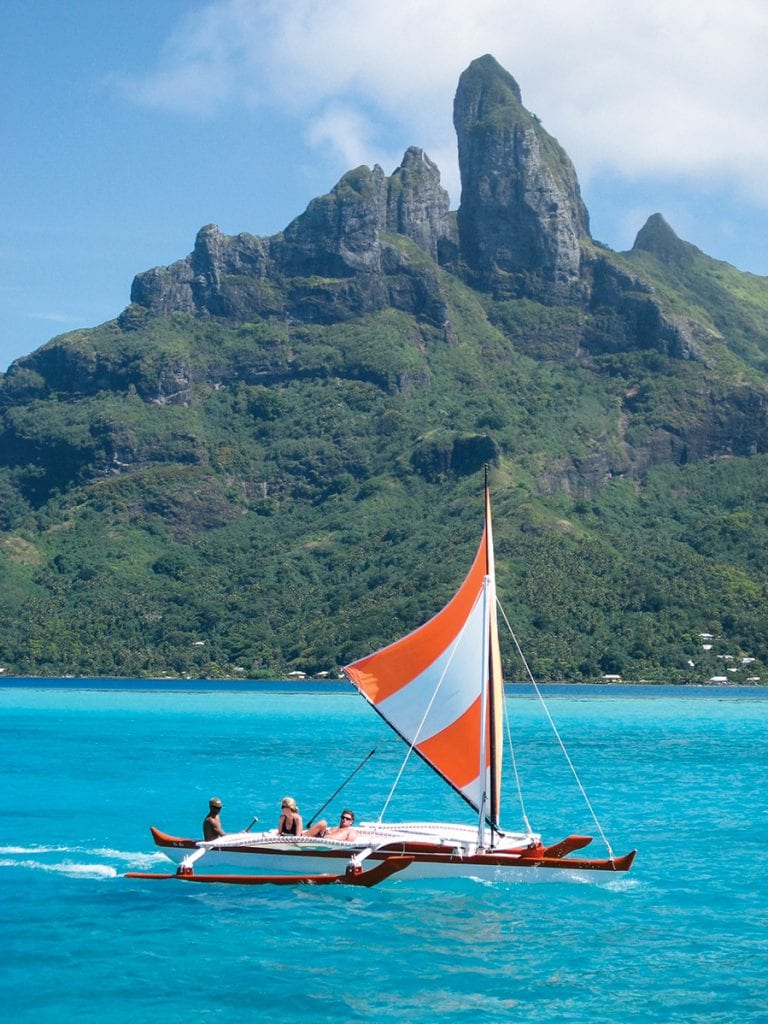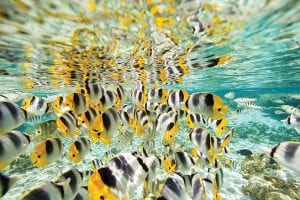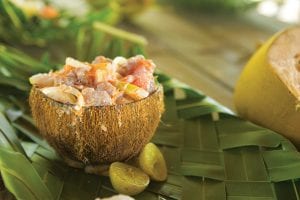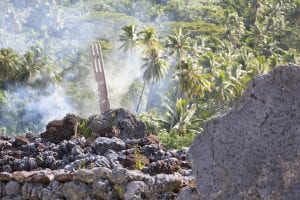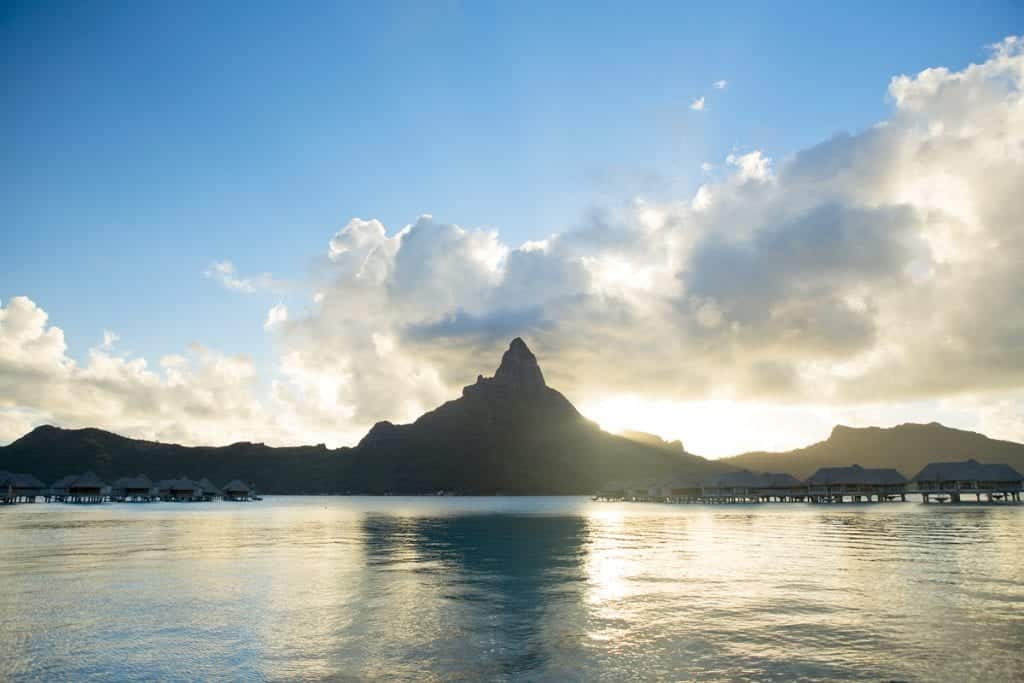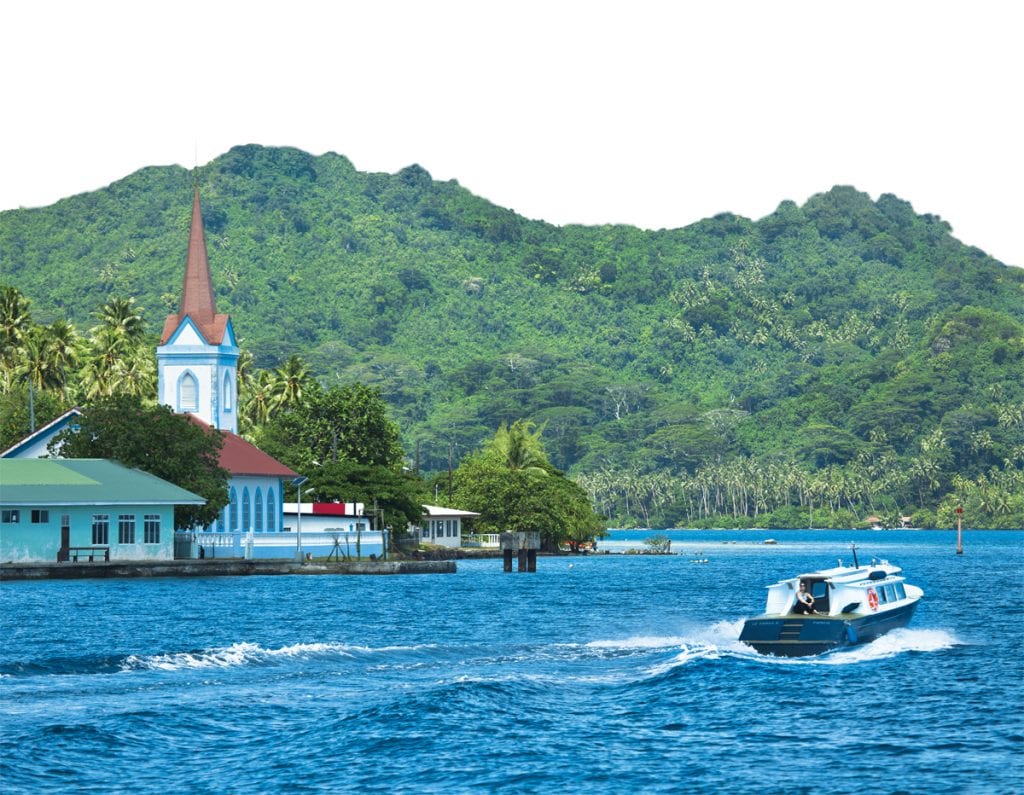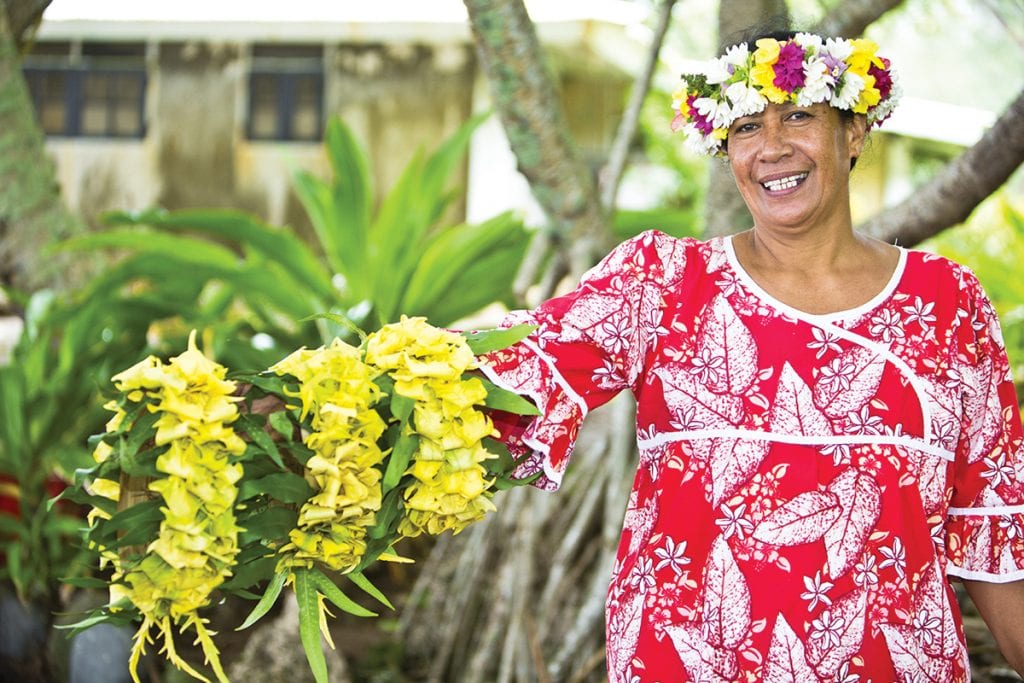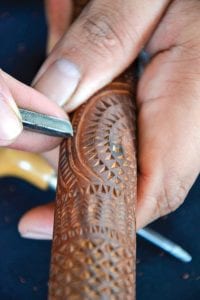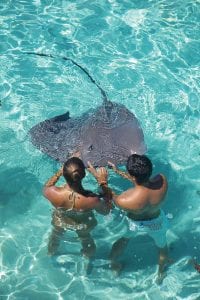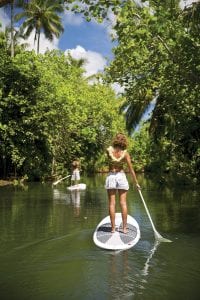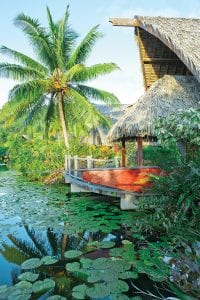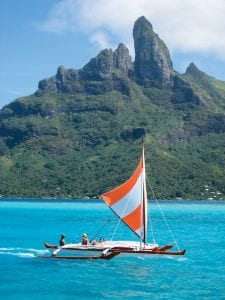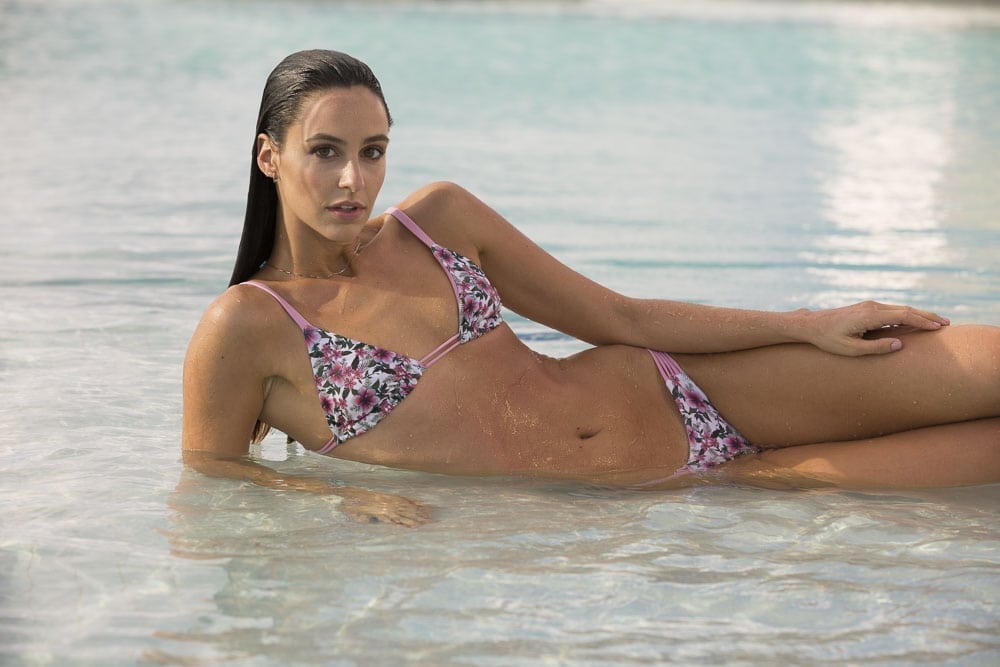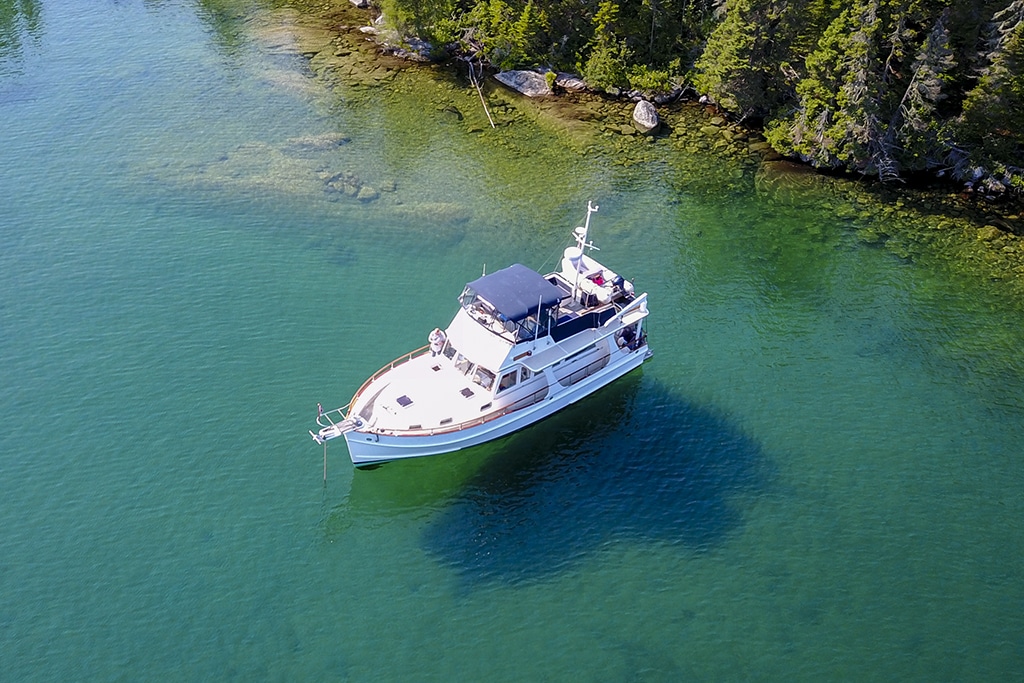A dream charter in Tahiti will stir your senses
Ahh, Tahiti. The word itself elicits images of turquoise waters, swaying palm trees and dramatic vistas that are so camera-friendly, they’re always ready for a close-up. You can almost hear the song Bali Ha’i from the Rodgers and Hammerstein musical South Pacific play in the background. A charter in Tahiti is a bucket list item for many but crossed off only by a fortunate few.
Tahiti is one of the Society Islands of French Polynesia, and at 16 degrees south latitude, it’s in the middle of the Pacific Ocean and thousands of miles from anywhere. It’s a place for every one of your senses: the sight of aquamarine water and swaying palm trees; the sound of Polynesian music and crashing surf; the taste of tropical fruits; the smell of tropical flowers, and the feel of the sun’s warmth on your skin while your toes dig into sand the color and texture of sugar.
Year-round temps are steady at about 85 degrees, and the tide is about a foot. The people let you get away with speaking English or mangled French, but any attempt to speak Tahitian is much appreciated. You’ll hear Ia ora na (hello) in every shop, restaurant, beach shack, and bar, so it’s a good way to start your new musical Tahitian vocabulary.
Dreamy Dining
After landing on Tahiti proper, you’ll still need to take a puddle-jump flight to the island of Raiatea where the charter bases are located, but be sure to take a day before or after your charter to experience Tahiti Nui and its municipal morning market in Papeete. This two-story-wonder market has it all, from fish to flowers and souvenirs to soap. There’s even the Tahitian version of a food court with kiosks selling baguette sandwiches, prepared curries, poisson cru (marinated fish similar to ceviche), and French pastries.
Tahitian cuisine marries fresh island fare like mangoes and mahi-mahi with vanilla beans or exotic spices. Add some French flare with great wine, cheese, and abundant fresh baguettes, and your taste buds will never want to go home. In the evening, have dinner at les roulottes (food trucks) at the port. Each truck has a specialty: Chinese, fish, crepes, pizzas, and more. No alcohol is served, but it’s the cheapest dinner you’ll find, and the atmosphere is a welcoming mix of sunburned cruisers and locals who come with the whole family.
Raiatea
Maeva (welcome) to your yacht charter starting on Raiatea, the “Sacred Island”, a 45-minute flight from Papeete. Provisioning is done in Uturoa, Raiatea’s main town. When you book your charter, opt for a catamaran because the water is “skinny,” especially around the motus (islands of the fringing reefs)—so an extra foot under your keels does wonders for your confidence. Take a good look at the charts because this is marker-to-marker navigation and in French Polynesia, it’s not “red-right-returning.”
The islands of Raiatea and Taha’a share a fringing reef so it’s easy to stay in protected waters for the first day. Head north an hour from the base to Hurepiti Bay on Taha’a, the “Vanilla Island.” Here, Noah Plantier runs Vanilla Tours, a great land excursion on a 4×4 truck. A demonstration of vanilla pollination is a highlight as is feeding coconuts to chickens (they’re crazy for the stuff).
Upon request, Noah also provides noni juice, the fruit of a tree in the coffee family. It’s purported to be a miracle cure and a fountain of youth, but before you drink up, understand that the stuff tastes like a mix of laundry water and spoiled milk. Oh, what price is vitality!
Mementos Abound
Taha’a is also black pearl central, so a visit to a “farm” like Champon is a must. Nobody gets away from a pearl display case without being a few Polynesian francs lighter. These hypnotic wonders are unique to this part of the world, so investing in one—or several—is the best possible memento of your South Pacific charter.
If you have more than a week, make a run to the island of Huahine first. Exit Taha’a’s reef via one of the well-marked passes like To’ahotu and make the 22-mile crossing. It’s a worthwhile trip because Huahine is one of the least inhabited islands with shades of water that defy description. You can enter through either Avamoa or Avapehi pass and anchor near the town of Fare. Rent a bike to explore the island. Ride to the northern tip to visit the stone fish traps in Lac Maeva, the many maraes (religious sites), and the sacred, blue-eyed eels in the freshwater river that untangle their six-foot bodies to chase down a bit of canned tuna.
A trip back to Raiatea provides time to explore the island before heading on to Bora Bora. On the east side of Fa’aroa Bay on the east side, you can dinghy or standup paddleboard on a river between taro fields that are surrounded by bushes of exotic flowers, their scent intoxicating in the still air.
At times, the river gets so narrow and shallow that you may have to get out and walk, pulling the dink or board behind you. Nearby, in Onoa Bay, is Marea Taputapuatea, one of the largest spiritual sites in French Polynesia. Many of the stone temple outlines have been rebuilt to preserve the civilization that resided here a thousand years ago. Then, drop anchor on the western side of Taha’a close to the Paipai Pass to get an early morning start for the crossing to Bora Bora.
Lure of the Lore
According to ancient Tahitians, Raiatea is the mother island and Bora Bora is her firstborn. Bora is very camera friendly and is exactly like the brochures you’ve ogled at the travel agency. You can see Mount Otemanu for miles, Bora’s peak that juts out from the center of her lagoon. But Bora is a deceptive siren. The only way to enter safely is via Teavanui Pass on the west side to avoid her treacherous reef where the breaking, white water pounds day and night. Once inside the reef, head to the dock in the village of Vaitape for ice and Hinano (local beer) at Chin Lee’s market. From here, you have two choices: a cheeseburger in paradise at the Bora Bora Yacht Club or a mooring for the night at Bloody Mary’s, a palapa-style restaurant with great fish and sand floors where shoes are optional.
In the morning, it’s time for the 90-minute motor to the back of the lagoon. Go while the sun is high in the sky and study your charts closely. Keep the green markers toward the reef and red markers to the island, and watch for the doglegs that confuse the unsuspecting charterer. Binoculars and the depth sounder will become your best friends, and be sure to have the hook down before the sun gets low and the glare of the water blocks your ability to read the depth by the water color. During this trip, it’s easy to become obsessed with Otemanu’s 2,300-foot peak that dominates every postcard. Keep a camera on deck because that view is addictive from every angle.
Secret Spots
Few people know about the drift snorkel at the southeastern tip of Bora’s fringing motus. Pull the dinghy onto the beach and walk (wearing water shoes) to the windward edge of the reef and then drift back with the current. Fish and rays dart around in the nooks and crannies of this underwater garden. But the star attraction is the clams with their multi-colored iridescent mantles that burrow into the coral heads. Farther up the island you can catch a glimpse of giant manta rays early in the morning.
I’ve visited French Polynesia six times, but I never cross it off my bucket list. If I’m lucky enough to be swinging on the hook looking up at the Southern Cross overhead, well then, I’m lucky enough.
By Zuzana Prochazka, Southern Boating November 2018
Photos courtesy of the Tahiti Tourism Board and Zuzana Prochazka


